KYOTO Design Lab[D-lab]が2019年6月にドイツのヴィトラ・デザイン・ミュージアムで開催した展覧会「Food Shaping Kyoto」の展示デザインが、国際的に権威のあるデザインアワード「iF DESIGN AWARD 2021」インテリア・建築部門の展示デザインカテゴリを受賞しました。「Food Shaping Kyoto」はRed Dot Award 2020につづいての受賞になります。
ハノーバー(独)を本拠地とするiF International Forum Designは、世界で最も長い歴史を持つ独立したデザイン団体で、毎年優れたデザインを選出し「iFデザインアワード」を授与しています。
98名のデザイン専門家が52か国/地域から集まった9,509件の応募デザインを厳正に審査し、 「Food Shaping Kyoto」は主にユーザーインターフェースにおいて高い評価を受け、今回の受賞となりました。
インテリア・建築部門では、応募作のうち22%が受賞しています。
「Food Shaping Kyoto」の受賞についての詳細は、iFの総合デザインポータルサイト iF WORLD DESIGN GUIDE の受賞ページにてご覧いただけます。
iFデザインアワードについて
iFデザインアワードは、67年にわたり国際的に権威のあるデザインアワードのひとつとして、またiFロゴは優れたデザインの証として広く認知されています。
この賞は、製品、パッケージング、コミュニケーション、サービスデザイン、アーキテクチャ、インテリア/インテリア、プロフェッショナルコンセプト、ユーザーエクスペリエンス (UX)、ユーザーインターフェイス (UI)の9つの分野で構成されています。受賞歴のあるすべてのデザインは、iF WORLD DESIGN GUIDEおよびiF Design Appで公開されています。
Food Shaping Kyoto について
都市は、文化や生産・消費に至る食の循環によってどのようにかたちづくられてきたか?「Food Shaping Kyoto」は、都市と食の関係を都市構造と食文化を横断する6つのキーワード──生産、水、市場、流通、都市形態学、祇園祭──で読み解き、建築や料理の模型、錦市場で使用されている道具、リサーチの成果をあらわした図・写真・映像など、D-labが京の台所・錦市場の協力を得て2015年から続けてきたリサーチの成果に基づいて構成された400点以上の資料によって描き出した展覧会です。都市リサーチを紹介するテーブル、リサーチで収集したオブジェクトのライブラリータワー、京都の食文化を担う市場などの様子を表現した360度映像、京都の伝統食材とマーケットの装飾をイメージさせる天井インスタレーションなどを、バックミンスター・フラー・ドームの特徴的な円形の空間と食の円環の様相をリンクさせデザインし、来場者が京都への没入感を感じられるような空間体験により、都市を体験する新しい展示デザインを提案しました。
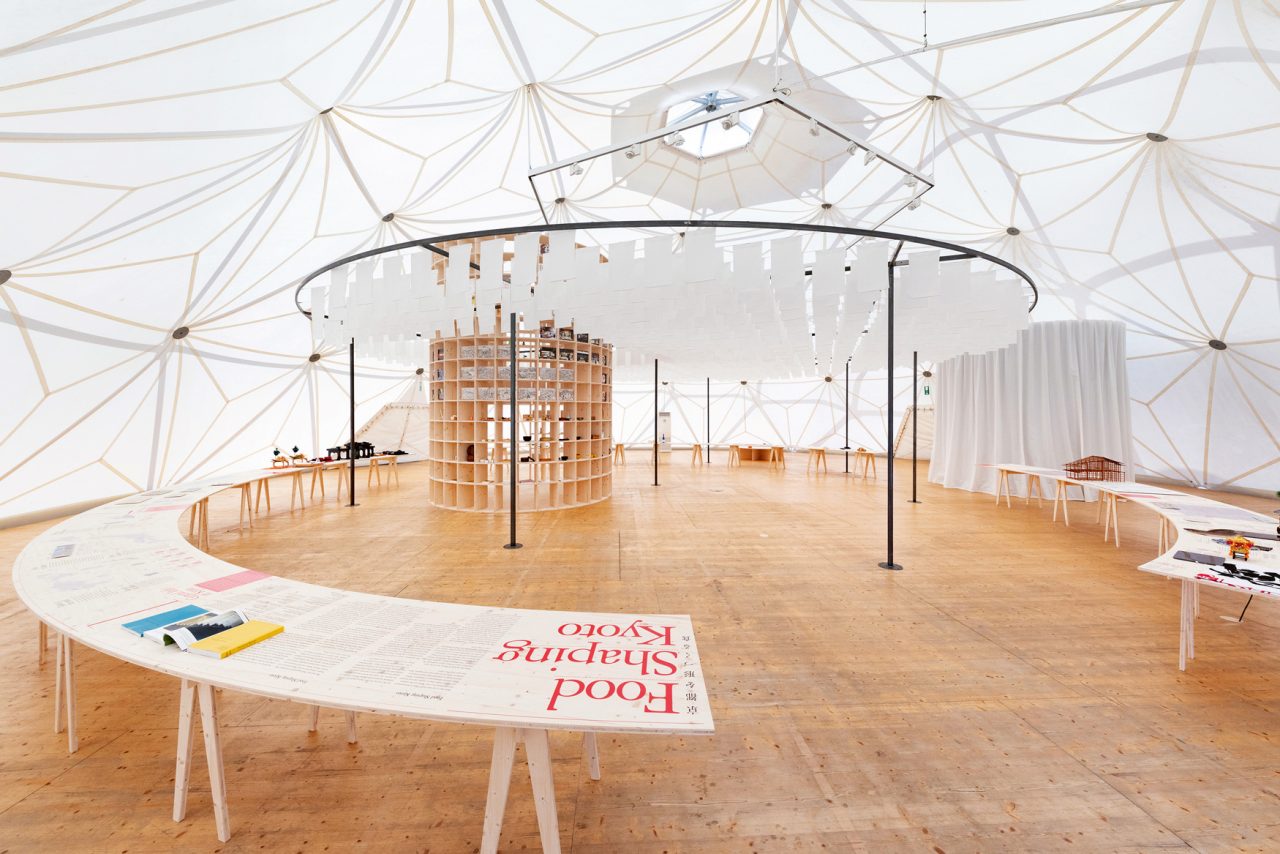
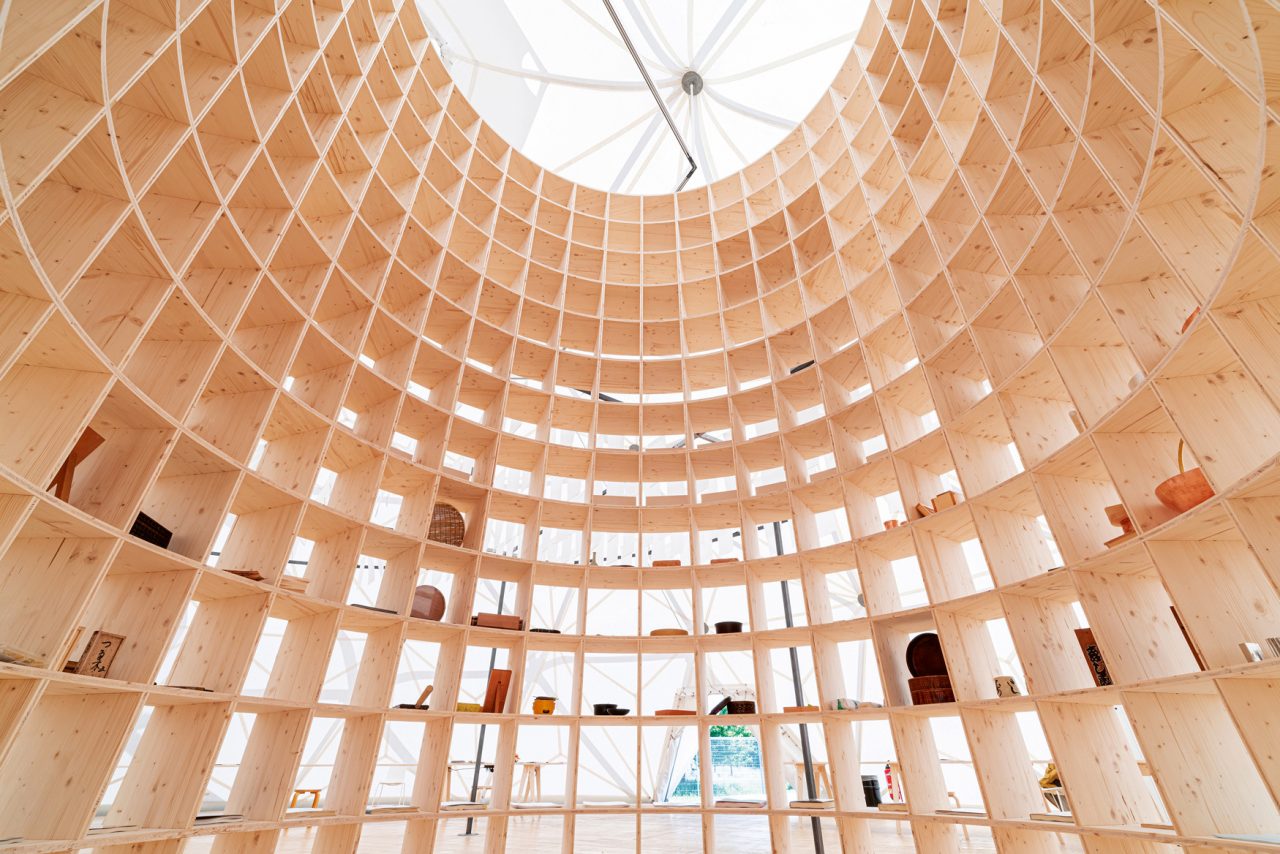
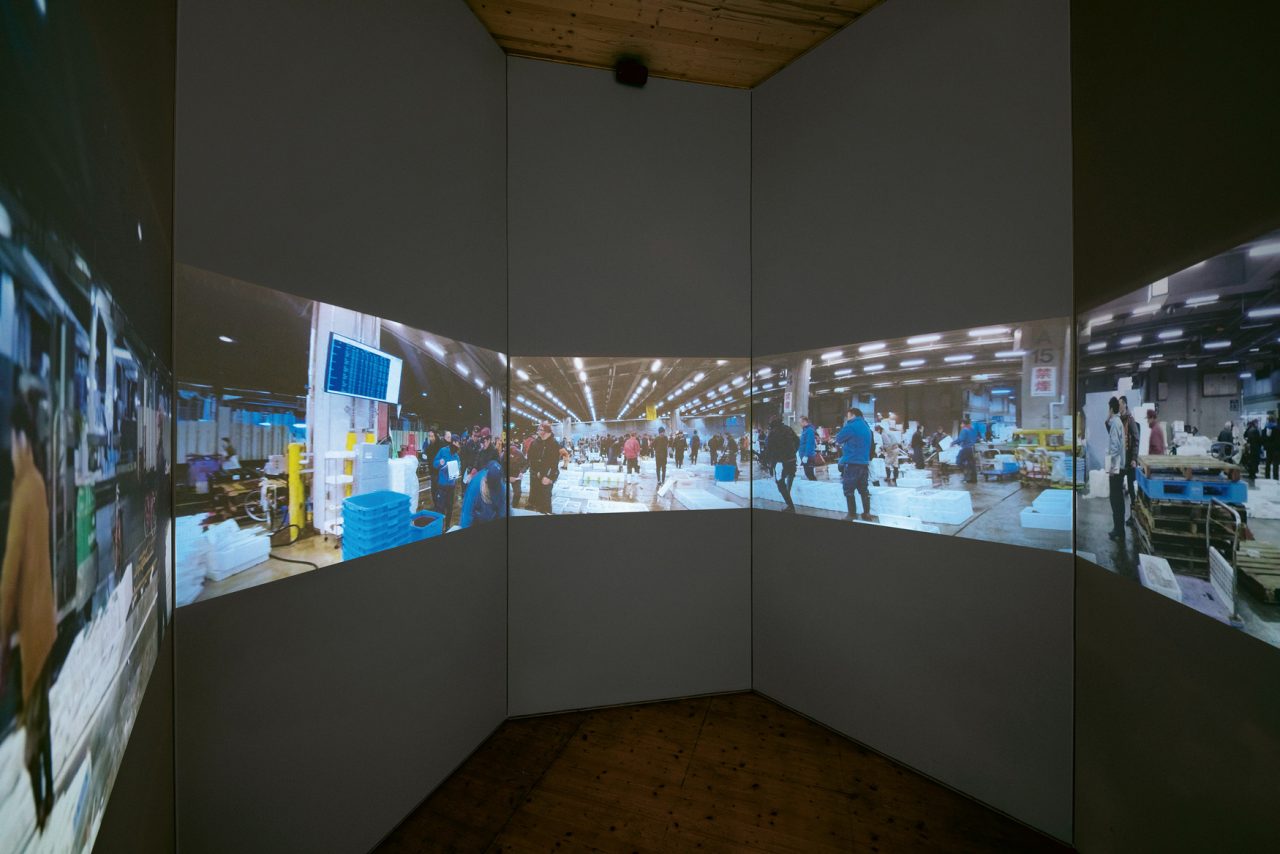
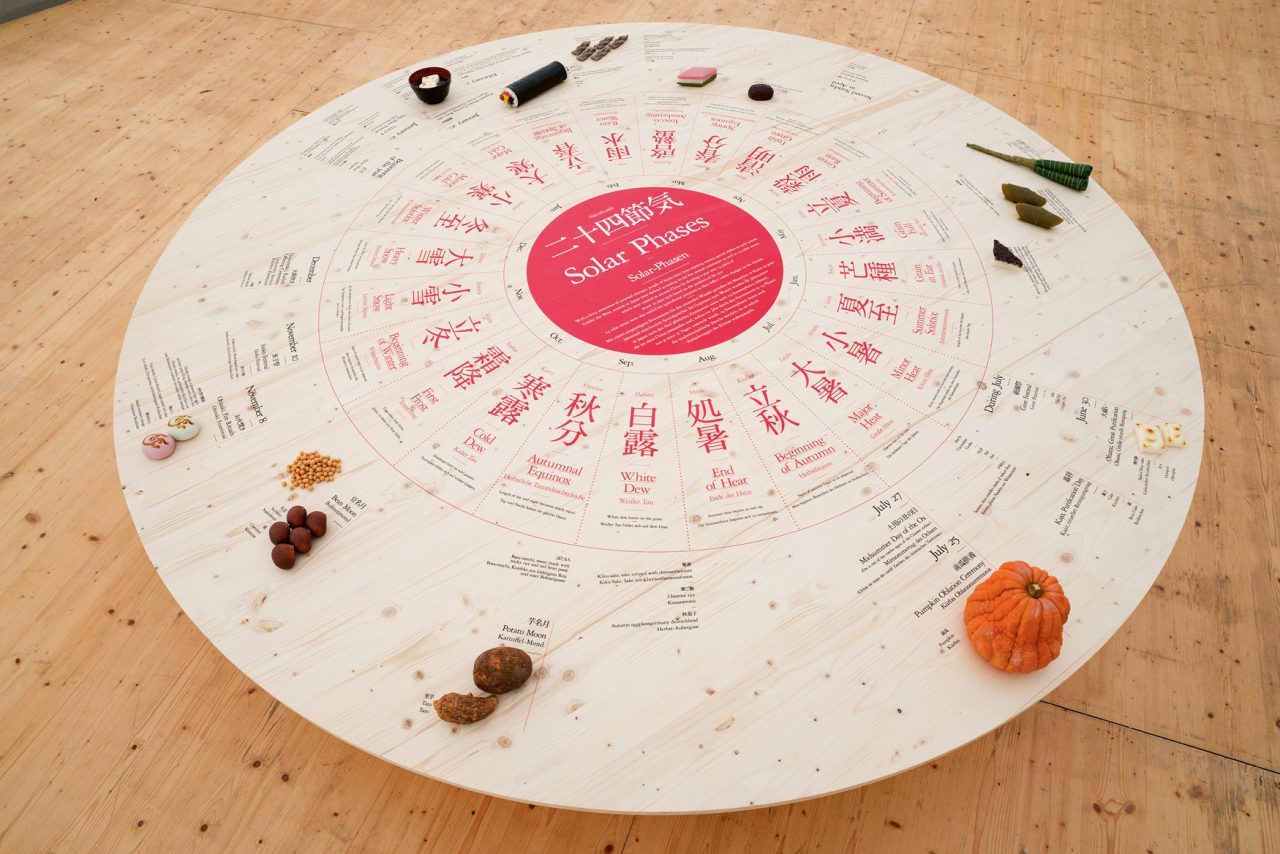
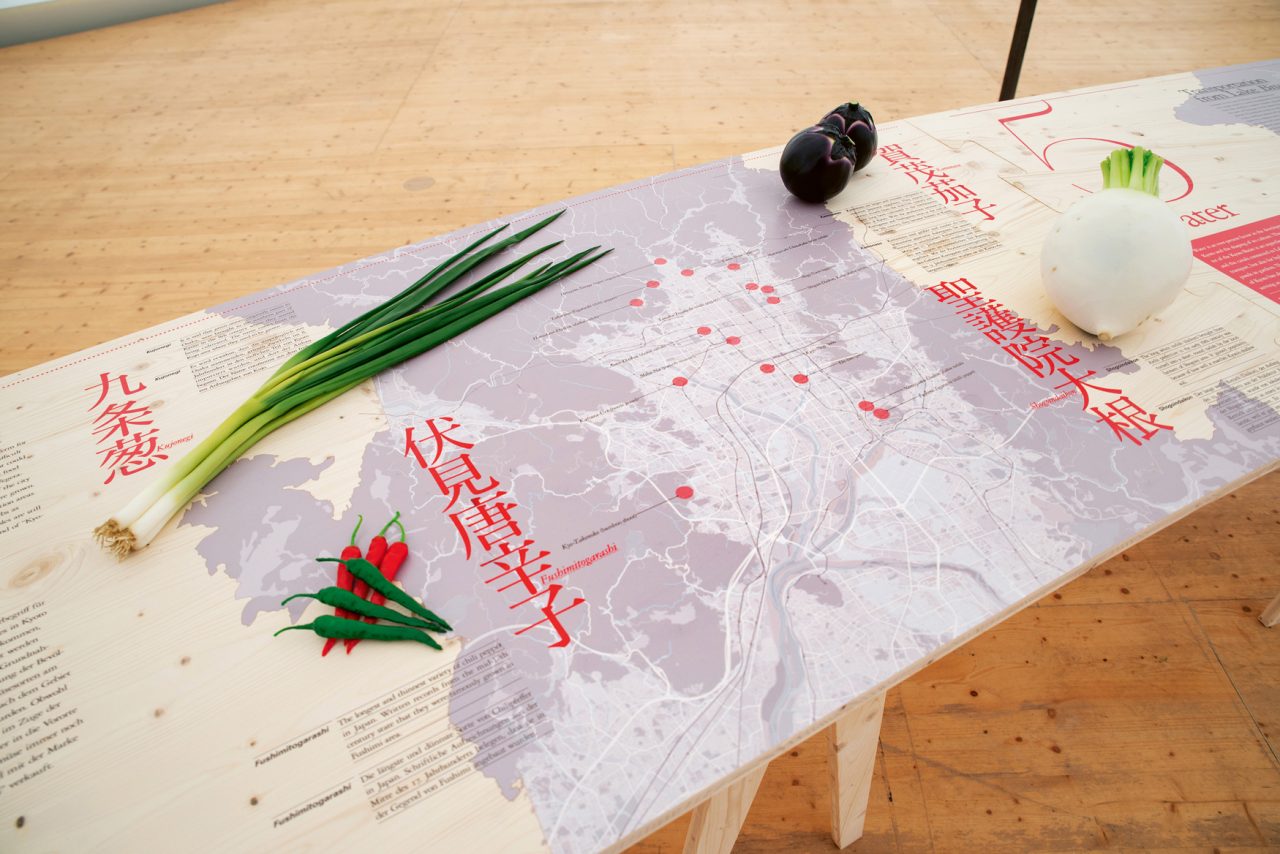
photo by Tomomi Takano
クレジット
Exhibition Design:
Food Shaping Kyoto
Exhibition by the Vitra Design Museum, Shadi Rahbaran & Manuel Herz and the KYOTO Design Lab
クライアント
ヴィトラ・デザイン・ミュージアム
デザイン
ラーバラン・ハーゼラー・アーキテクツ
マニュエル・ヘルツ・アーキテクツ
京都工芸繊維大学 KYOTO Design Lab
プロジェクトチーム
マニュエル・ヘルツ・アーキテクツ
マニュエル・ヘルツ、ペニー・アルヴィソウ
–
ラーバラン・ハーゼラー・アーキテクツ
シャディ・ラーバラン、マルセル・ワグネル
–
京都工芸繊維大学 KYOTO Design Lab
小野芳朗
岡田栄造
池側隆之
三宅拓也
–
シンガポール工科デザイン大学[SUTD]
エルウィン・ヴィライ
–
京都工芸繊維大学
緒方胤浩、横瀬健斗、金憙譽、宮川智将、孫夢、萬喜亮太、平本嵩、河西陸、綱島卓也
The Vitra Design Museum, Shadi Rahbaran & Manuel Herz and the KYOTO Design Lab were a winner of this year’s iF DESIGN AWARD, the world-renowned design prize. The winning design, Food Shaping Kyoto, won in the discipline Interior Architecture, in the Public Exhibitions category. Each year, the world’s oldest independent design organization, Hannover-based iF International Forum Design GmbH, organizes the iF DESIGN AWARD. Food Shaping Kyoto won this award following the Red Dot Award 2020.
Food Shaping Kyoto won over the 98-member jury, made up of independent experts from all over the world. The competition was intense: almost 10,000 entries were submitted from 52 countries in hopes of receiving the seal of quality.
The discipline with the highest quality of entries and the highest percentage of awards was “User Interface” with 58%. In the discipline “Interior architecture” the competition was exceptionally tough, so that only 22% of the entries were awarded.
More information about Food Shaping Kyoto can be found in the “Winners” section of the iF WORLD DESIGN GUIDE.
About the iF DESIGN AWARD
For 67 years, the iF DESIGN AWARD has been recognized as an arbiter of quality for exceptional design. The iF label is renowned worldwide for outstanding design services, and the iF DESIGN AWARD is one of the most important design prizes in the world. Submissions are awarded in the following disciplines: Product, Packaging, Communication and Service Design, Architecture and Interior Architecture as well as Professional Concept, User Experience (UX) and User Interface (UI). All awarded entries are featured on the iF WORLD DESIGN GUIDE and in the iF design app.
About the Food Shaping Kyoto
How has the city of Kyoto been shaped by its culture cultivated over a long period of time and the food ecosystem from production to consumption? In the exhibition “Food Shaping Kyoto” the relationship between the city and food was understood through 6 key words that cross urban structure and food culture–production, water, markets, distribution, urban morphology, and Gion Festival and was depicted by architectural models, food models, tools used in the Nishiki market as well as drawings, photographs, and images that represent the results of research. Tables introducing urban research, a library tower with objects collected through research, a chamber showing 360-degree video of the market crucial to Kyoto’s food culture, and a ceiling installation that inspires Kyoto’s traditional food and market decorations were designed to link the circular space characteristic of the Buckminster Fuller Dome with the food ecosystem. We proposed a new exhibition design that provides visitors with a spatial sense of immersion in Kyoto.





photo by Tomomi Takano
Credits
Food Shaping Kyoto
Exhibition by the Vitra Design Museum, Shadi Rahbaran & Manuel Herz and the KYOTO Design Lab
Client:
Vitra Design Museum
Design:
Rahbaran Hürzeler Architects
Manuel Herz Architects
KYOTO Design Lab, Kyoto Institute of Technology
Project Team:
Manuel Herz Architects:
Manuel Herz, Penny Alevizou
–
Rahbaran Hürzeler Architects:
Shadi Rahbaran, Marcel Wagner
–
KYOTO Design Lab, Kyoto Institute of Technology:
Yoshiro Ono, Eizo Okada, Takayuki Ikegawa, Takuya Miyake
–
Singapore University of Technology and Design:
Erwin Viray
–
Kyoto Institute of Technology:
Kazuhiro Ogata, Kento Yokose, Heeye Kim, Tomonobu Miyakawa, Meng Sun, Ryota Manki, Takashi Hiramoto, Riku Kasai, Takuya Tsunashima